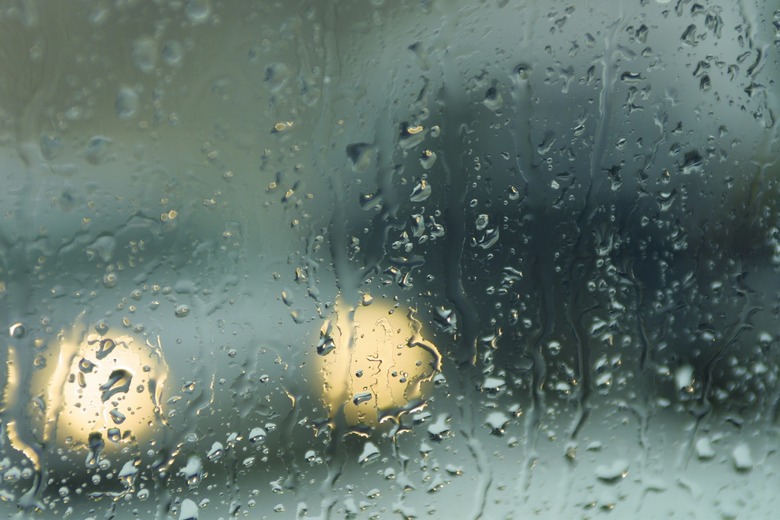What Does The Condensation Process Require?
Condensation causes the clouds in the sky, the rain that falls and the fog that forms on your glasses when you walk out of a cool building on a humid day. As part of the water cycle, condensation plays an important role in sustaining life on Earth. Condensation occurs when certain conditions are met.
The condensation process
The condensation process
Condensation is the term for water changing state from a vapor to a liquid. The process requires the presence of water vapor in the atmosphere, falling temperature and the presence of another object for water vapor to condense around.
Rising air
Rising air
Water vapor suspending in rising air causes condensation. The sun's rays pass through the atmosphere and cause ground temperature to rise. Air above the ground warms as heat radiates from the Earth and starts to rise. Evaporated water mixes with the atmosphere and rises with the warmed air. As the heated air rises, it gets farther away from ground heat and begins to cool. The water particles lose heat and slow down. Once they cool down enough, the water particles change from vapor to a liquid state. This change of physical state is known as condensation.
Cool surfaces
Cool surfaces
Water-saturated air causes condensation as it comes into contact with a cooler surface. The excited vapor particles bump into the cool surface and lose energy, changing states from a gas to a liquid. Water droplets on drink glasses and fogged windshields are the result of water vapor condensing because the temperature requirements for condensation were met.
Falling Temperature
Falling Temperature
As the sun sets, less solar radiation reaches the ground, causing the ground temperature to drop. The atmosphere above the ground loses heat due to the cooler ground temperature. As atmospheric pressure falls, the water particles in the air slow down. When the air temperature cools to the dew point, the air can no longer hold all of its moisture. Water condenses and forms dew.
Condensation nuclei
Condensation nuclei
The presence of water vapor and temperature variations lead to condensation, but one other requirement must be met for condensation in the atmosphere. Condensation nuclei must be present for water droplets to form around. Suspended in the atmosphere, condensation nuclei are needed for cloud formation. Microscopic particles of salt and dust, microbes and smoke particles act as condensation nuclei. Water cools and attaches to the suspended particles, decreasing surface tension in water droplets and allowing droplets to combine.
Cite This Article
MLA
Linkenhoker, Eric. "What Does The Condensation Process Require?" sciencing.com, https://www.sciencing.com/condensation-process-require-8764139/. 24 April 2017.
APA
Linkenhoker, Eric. (2017, April 24). What Does The Condensation Process Require?. sciencing.com. Retrieved from https://www.sciencing.com/condensation-process-require-8764139/
Chicago
Linkenhoker, Eric. What Does The Condensation Process Require? last modified March 24, 2022. https://www.sciencing.com/condensation-process-require-8764139/
